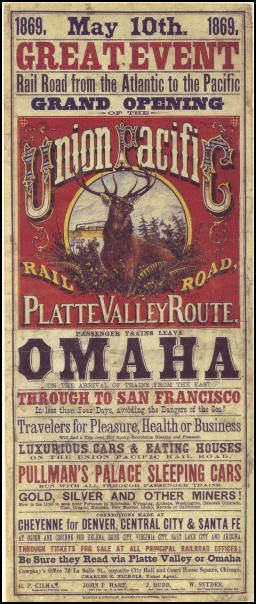Stateside With Rosalea Barker: Nebraska
Nebraska
This being the Cornhusker State, it’s time to husk some corn—of the sentimental kind. Nebraska entered the US as the 37th state on March 1, 1867, just under two years after the capture of Confederate President Jefferson Davis on May 10, 1865, and the surrender of the last Confederate army two weeks later. It was first state admitted after the end of the Civil War.
For good reason.

Click to enlarge
Note the date—four years to the day after Davis was captured.
Although the War Between the States, as the CW is also known, is connected in most people’s minds with the ending of slavery, that lofty goal wasn’t the cause of it. There is a parallel with the way that modern US governments have promoted the lofty goal of spreading “democracy” and “freedom” as a reason for intervening militarily in other countries—while the real intent is to secure US access to resources and markets.
If the South’s economy based on enslaved labor could be destroyed, so too would be destroyed its ability to build a transcontinental railroad giving access to the resources and markets of the far West. And from the South’s point of view, the lock it had on the north-south trade route called the Mississippi River had been under threat ever since Northern railroad engineers first began constructing bridges crossing it.
Back in the 1850s, when Jefferson Davis was Secretary of War in President Franklin Pierce’s Cabinet, he had tried to block construction of a bridge at Rock Island on the border of Illinois and Iowa, saying that the land on which the bridge piers would sit was a military preserve. He lost that battle in court. But two weeks after the bridge came into operation in 1854, a northbound steamer on the Mississippi crashed into one of the piers, caught fire, and burned part of the bridge down. The Effie Afton’s owner sued the bridge company for the value of his vessel and cargo
Who did the Chicago and Rock Island Line call to defend them—all the way to the Supreme Court—but Abraham Lincoln, famed railroad lawyer. By the time the case got to the Supreme Court in 1863, Lincoln was President, so he did not argue the case there, but the Supes’ opinion in favor of the railroad company was largely based on Lincoln’s earlier arguments in the lower courts.
What has this all to do with Nebraska? Well, the Nebraska Territory lay to the west of Iowa. While campaigning for President in 1859, Lincoln met in Council Bluffs, Iowa—just across the Missouri from Nebraska—with railroad engineer Grenville Dodge and asked him what was the best route for a Pacific railroad to the West. Dodge replied it was the Platte Valley, which extends 600 miles from the Missouri to the Rocky Mountains. Lincoln would become that route’s No. 1 booster, Dodge would become a General in the Union Army, and Council Bluffs would become milepost 0 for the Union Pacific railroad being built west to meet up with the Central Pacific being built eastward from Sacramento, California.
With the departure of Southern delegations from Congress in 1860, the way was cleared for the enactment of the Land Grant College Act, the Homestead Act, a National Banking Act, and the Pacific Railroad Act, all of which enabled the construction of the northern route and the rapid influx of settlers. The Union Pacific broke ground in Omaha, across the river from Council Bluffs, in 1863, but didn’t start laying track until 1865, when the Civil War was over. As the railroad progressed westward, the company set up temporary towns such as North Platte, which one reporter described like this: “Every house is a saloon, and every saloon is a gambling den. Revolvers are in great requisition.”
Today, North Platte’s Bailey Yard is the world’s largest freight rail yard. Through it pass the products of the industries upon which Nebraska’s economy is based: flour, canned vegetables, packaged meat, and anything you can think of that is derived from corn. Including the Devil’s urine, high fructose corn syrup, whose presence in practically every foodstuff in the United States is one of the major causes of the nation’s obesity epidemic.
The capital city of Nebraska is Lincoln.
--PEACE—


 Gordon Campbell: On Why The US Stands To Lose The Tariff Wars
Gordon Campbell: On Why The US Stands To Lose The Tariff Wars Eugene Doyle: Before It’s Too Late - Reimagine New Zealand’s Military Future
Eugene Doyle: Before It’s Too Late - Reimagine New Zealand’s Military Future  Binoy Kampmark: Gender Stunts In Space - Blue Origin’s Female Celebrity Envoys
Binoy Kampmark: Gender Stunts In Space - Blue Origin’s Female Celebrity Envoys Richard S. Ehrlich: A Deadly Earthquake & Chinese Construction
Richard S. Ehrlich: A Deadly Earthquake & Chinese Construction Ian Powell: It Does Matter To Patients Whether They Are Operated In A Public Or Private Hospital
Ian Powell: It Does Matter To Patients Whether They Are Operated In A Public Or Private Hospital Gordon Campbell: On Marketing The Military Threat Posed By China
Gordon Campbell: On Marketing The Military Threat Posed By China